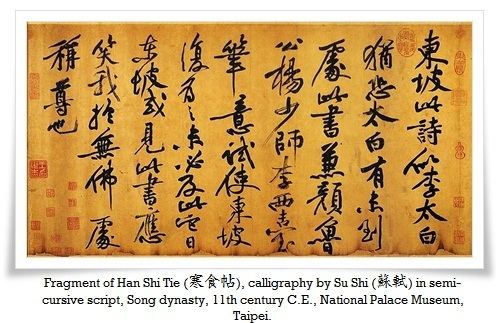Type Logographic | Time period Han Dynasty to present | |
 | ||
Languages Old Chinese, Middle Chinese, Modern Chinese Parent systems Oracle bone script
Seal script
Clerical script
Cursive script
Semi-cursive script Child systems Regular script
Zhuyin
Simplified Chinese
Chu Nom
Khitan script
Jurchen script
Tangut script Unicode range 4E00–9FFF, 3400–4DBF, 20000–2A6DF, 2A700–2B734, 2F00–2FDF, F900–FAFF | ||
Semi-cursive script is a cursive style of Chinese characters. Because it is not as abbreviated as cursive, most people who can read regular script can read semi-cursive. It is highly useful and also artistic.
Also referred to in English both as running script and by its Mandarin Chinese name, xíngshū, it is derived from clerical script, and was for a long time after its development in the 1st centuries AD the usual style of handwriting.
Some of the best examples of semi-cursive can be found in the work of Wang Xizhi (321-379) of the Eastern Jin Dynasty.
Chinese calligraphy cursive semi cursive scripts sample

References
Semi-cursive script Wikipedia(Text) CC BY-SA
